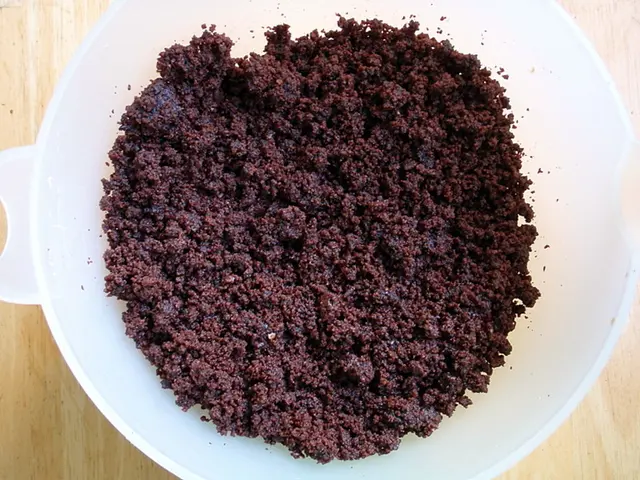Differentiating Age Spots from Skin Cancer: Recognizing the Signs
Checking out the world of skin imperfections, huh? Age spots and skin cancer are two frequent visitors on our skin's landscape, especially when it's been basking in the sun's rays for a hot minute. Here's a lowdown on the differences between these two skin conditions and their associated counterpart, actinic keratosis. Let's dive in!
First off, what's the deal with age spots? Well, as we age and our skin is exposed to sunlight, it might start to produce a bit more melanin, resulting in tiny patches that seem darker than the skin around them. They're usually flat and smooth, appearing on the face, hands, shoulders, and other sun-exposed areas. Age spots are traditionally harmless, but some might opt for aesthetic treatment options like creams, laser treatments, or chemical peels to make them less noticeable.
Now, let's move onto the not-so-superstar guest—skin cancer. Skin cancer comes in various forms, but the most common ones are basal cell carcinoma and squamous cell carcinoma. Both types develop due to damage from UV radiation and can appear on sun-exposed areas. Basal cell carcinoma may look like a smooth, shiny, and pearly bump that might bleed or ooze, while squamous cell carcinoma usually has a red, scaly patch, firm nodule, or a sore that won't heal and may bleed. Both types can grow and change over time, and a doctor may need to perform a biopsy to confirm the diagnosis. Treatment for skin cancer can include surgery, radiation, topical treatments, cryotherapy, or systemic therapy.
Lastly, we have actinic keratosis. This is a pre-cancerous condition that can develop due to UV radiation damage and can occur on sun-exposed areas as well. Signs can include rough, scaly, or crusty patches, which may feel like sandpaper or be red, pink, brown, or tan. In some cases, actinic keratosis can develop into squamous cell carcinoma if it's not treated early. Common treatment options for actinic keratosis include cryotherapy, topical medications, photodynamic therapy, or laser therapy.
In conclusion, while age spots might steal the show worry-free, it's essential to keep an eye out for skin changes that don't seem usual. If you notice new or changing skin lesions, especially those that are rough, raised, or non-healing, remember to consult your local dermatologist for proper evaluation. Catching skin cancer early is crucial for effective treatment, resulting in improved health outcomes. Now, get out there and soak up some sun responsibly, my friend!
- Seniors may notice an increase in age spots, a harmless skin condition characterized by darker patches resulting from excessive melanin production due to sun exposure.
- Dermatology plays a critical role in the diagnosis and treatment of various skin conditions, including the not-so-benign skin cancer, which can appear in different forms like basal cell carcinoma and squamous cell carcinoma.
- Other skin cancer aside from the common types includes melanoma, a more aggressive form that requires immediate medical attention due to its potential to spread rapidly if not detected early.
- In the realm of medical-conditions, skin care is a vital aspect of health-and-wellness, as maintaining skin conditions involves being aware of one's skin and seeking professional help when necessary.
- Adopting a responsible skin-care routine is essential for preventing skin issues, such as regular sunscreen application and regular check-ups with a dermatologist, to ensure early detection and treatment of potential skin concerns like skin cancer.








